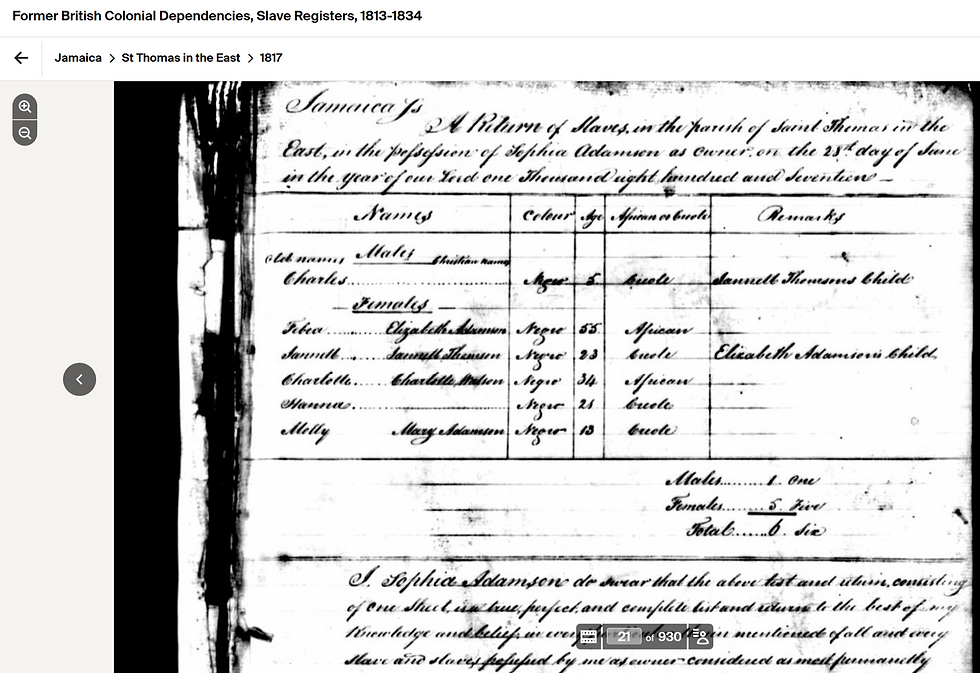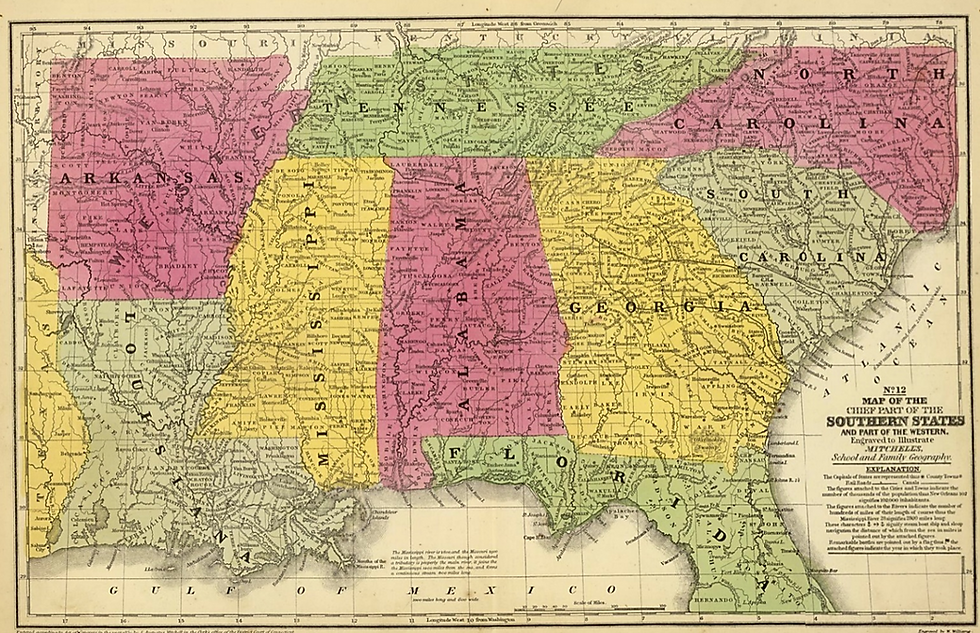British Slave Registers
- Leslie Ryan

- Jul 31
- 3 min read

While researching the family of pre-Civil War Scottish immigrants Ancestry showed me a new resource and I learned more history! I was quite curious to see that one of the people I was researching was shown to have a "residence" in "St. Thomas in the East, Jamaica" in 1817, and clicked on the Former British Colonial Dependencies, Slave Registers, 1813-1834.
Have you ever heard of British Slave Registers before?
Great Britain, Spain and France were the principle dealers in the "slave trade" for profit (the Queen got a cut of every slave transportation fee, for example) which made possible the harvesting of sugan cane and coffee in the Caribbean and tobacco and cotton in America. Britain's possessions were Jamaica, Barbados, the Leeward islands (St Kitts, Antigua and Nevis), and the Windward islands (Grenada and St Vincent). It is estimated that of the 12 million people captured into slavery, 3.1 million were transported on British ships, and of those 2.7 million arrived to their destinations alive.
When Britain abolished slavery in 1833, it is estimated that there were 800,000 in slavery in the Caribbean. You can imagine that the owners of these people viewed as a commodity were angry about losing their work force and their valuable "property." Britain passed the Slave Compensation Act 1837 in which 20 million pounds was to be paid to compensate them for their financial losses.
Hence, we have the "Formal British Colonial Dependencies, Slave Registers, 1813-1834 which is the official record of those Planters who requested compensation, plus the "old" and "Christened" names of the slaves. Here is one screenshot:

Besides names, it also lists age, what color they are, whether the are "Creole or African" and "Remarks" such as this person is someone's child. Of interest to me, I was researching a Needham family, and one enslaved person's "christened" name was Needham. There are no Needhams listed as slave owners in this register, but some people are represented by attorneys.
If you are searching for information about Southern ancestors whether owners or slaves, there are dozens of databases and indexes about British slaves in addition to the British Slave Register. I will add some links below.

This British Slave Register is a GREAT indexed tool at Ancestry for finding out about former slaves and slave owners from Great Britain. For me, it is certainly an explanation of where my Needham family may have suddenly come into enough to cash to invest in the new lands in Alabama, Mississippi, as they had no Bounty Grants for fighting in wars, and no large inheritances found for them in NC wills (yet, the search will go on!).
Our next big step is DNA testing! Have you tried that yet?
What new discoveries have you made? Can I help you with a FREE no obligation look at your tree info? Send me an email at the address below!
Regards,
Leslie Ryan
No compensation is received for any links or referrals herein.
No copyright infringement is intended.
Further reading:
Federal Records that Help Identify Former Enslaved People and Slave Holders
from the American National Archives
The Centre for the Study of the Legacies of British Slavery in London
Cyndi's List
How Did the Slave Trade End in Britain
Compensation of British Slave Owners from the Bank of England



